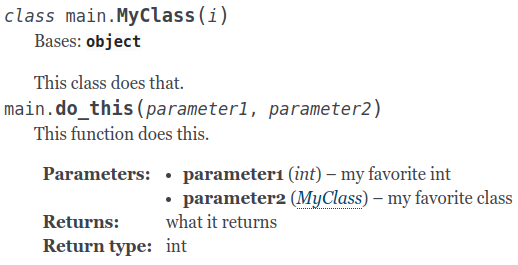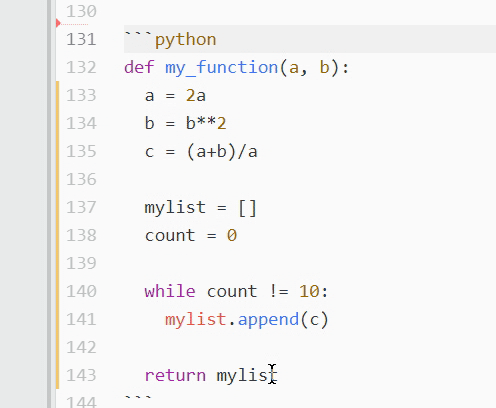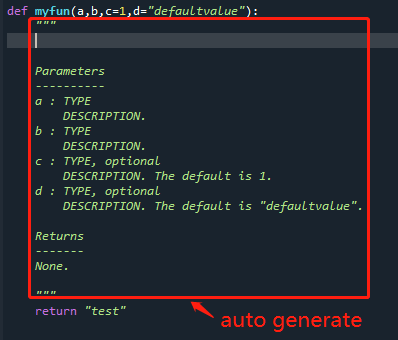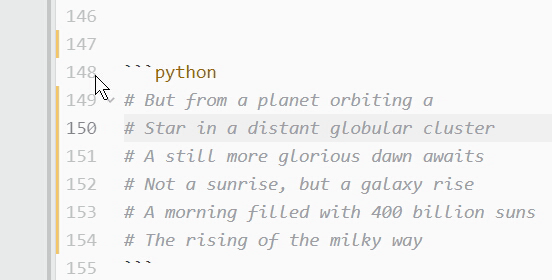How to comment parameters in Python?
How to comment parameters in Python?

I'd be happy to explain how to work with commenting in Python!
In Python, comments are used to provide information about your code, such as explaining the purpose of a piece of code, documenting how it works, or providing notes for others who might be working on the project.
There are two ways to comment in Python: using # for single-line comments and using triple quotes (""") for multi-line comments.

Single-Line Comments (using #)

In Python, you can use the # symbol to start a single-line comment. When you see #, everything that follows on that line is treated as a comment until the end of the line is reached. For example:
# This is a single-line comment
print("Hello, World!") # This too!
In this code, both comments are treated as single lines and do not affect the execution of your program.
Multi-Line Comments (using """")
Python also supports multi-line commenting using triple quotes ("""). You can start a block of comments by writing """ at the beginning of a line, followed by any number of lines you want to comment out, and then end it with another set of triple quotes (""").
For example:
"""
This is a
multi-line comment that spans
several lines. It's very useful for
explaining complex code or
documenting how something works.
"""
print("Hello, World!") # This is still single-line commenting
In this case, all text between """ and the next set of triple quotes is treated as a comment.
Best Practices
When commenting your Python code:
Be consistent: If you use single-line comments, stick to it. Avoid mixing single-line and multi-line comments. Make them readable: Make sure your comments are easy to understand. Use clear language and avoid abbreviations. Use meaningful comments: Comments should provide insight into what the code is doing or why it was written in a particular way. Don't overdo it: Don't comment every line of code. Focus on commenting complex logic, algorithms, or sections that might need additional explanation.By following these best practices and using Python's comment mechanisms effectively, you can create well-documented, understandable code that others will appreciate working with.
Python function comments list

Here is a list of Python functions with their descriptions:
1. print():
Prints its argument to the console, followed by a newline character.
Example:
print("Hello, world!")
Output:
Hello, world!
2. input():
Reads input from the user and returns it as a string.
Example:
name = input("What is your name? ")
print(f"Hello, {name}!")
Output (assuming the user enters "John"):
What is your name? John
Hello, John!
3. int():
Converts its argument to an integer.
Example:
x = int("5")
print(type(x)) # Output: <class 'int'>
4. float():
Converts its argument to a floating-point number.
Example:
y = float("3.14")
print(type(y)) # Output: <class 'float'>
5. str():
Converts its argument to a string.
Example:
z = str(5)
print(z) # Output: "5"
6. len():
Returns the length of an iterable (such as a list, tuple, or string).
Example:
my_list = [1, 2, 3]
print(len(my_list)) # Output: 3
7. range():
Creates an iterator that produces consecutive integers from start to stop (exclusive).
Example:
for i in range(1, 5):
print(i)
Output:
1
2
3
4
8. zip():
Combines multiple iterables into a single iterator of tuples.
Example:
names = ["John", "Mary"]
ages = [25, 30]
for name, age in zip(names, ages):
print(f"{name} is {age} years old.")
Output:
John is 25 years old.
Mary is 30 years old.
9. map():
Applies a function to each element of an iterable and returns a new iterator.
Example:
numbers = [1, 2, 3]
squared_numbers = map(lambda x: x ** 2, numbers)
for num in squared_numbers:
print(num)
Output:
1
4
9
10. filter():
Filters an iterable by applying a predicate function to each element and returns a new iterator.
Example:
numbers = [1, 2, 3, 4, 5]
even_numbers = filter(lambda x: x % 2 == 0, numbers)
for num in even_numbers:
print(num)
Output:
2
4
11. reduce():
Reduces an iterable by applying a binary function to each element and the accumulated result.
Example:
from functools import reduce
numbers = [1, 2, 3, 4, 5]
sum_of_numbers = reduce(lambda x, y: x + y, numbers)
print(sum_of_numbers) # Output: 15
12. enumerate():
Creates an iterator that produces tuples containing the index and value of each element in an iterable.
Example:
my_list = ["a", "b", "c"]
for i, item in enumerate(my_list):
print(f"{i}: {item}")
Output:
0: a
1: b
2: c
13. sorted():
Returns a new sorted iterator from an iterable.
Example:
my_list = [4, 2, 5, 3]
sorted_my_list = sorted(my_list)
print(sorted_my_list) # Output: [2, 3, 4, 5]
14. any():
Returns True if at least one element of an iterable is True; otherwise, returns False.
Example:
my_list = [True, False, True]
print(any(my_list)) # Output: True
15. all():
Returns True if all elements of an iterable are True; otherwise, returns False.
Example:
my_list = [True, True, True]
print(all(my_list)) # Output: True
These are just a few examples of the many built-in Python functions and their uses. By mastering these basic functions, you'll be well on your way to becoming proficient in Python programming!





























